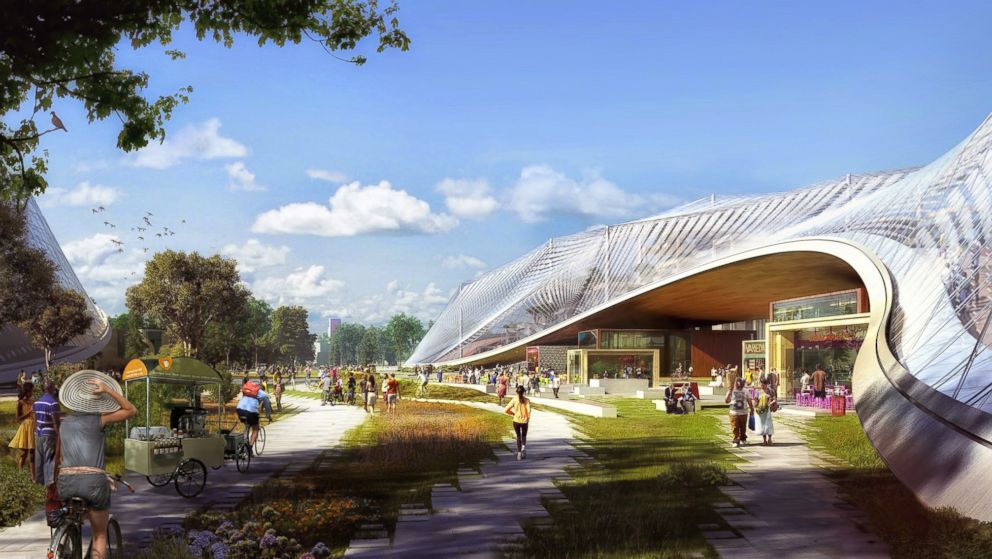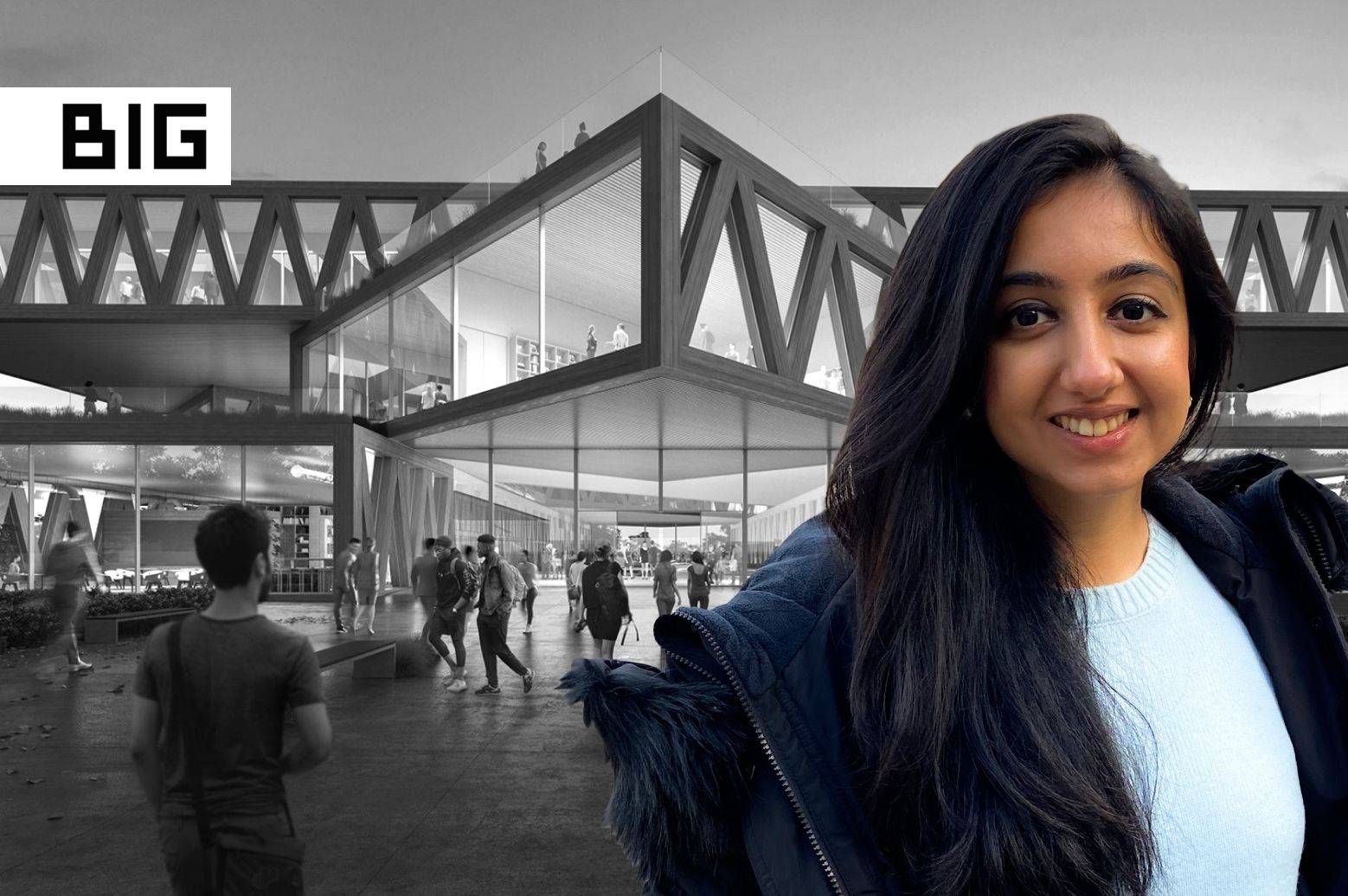Streaming Now – Novatr’s story on The Indian Edtech Story, only on Jio Hotstar.
PROGRAMS
Join thousands of people who organise
work and life with Novatr.
Exploring a Career in BIM and Computational Design with Ami Nigam
Pranjal Maheshwari
10 mins read
April 29
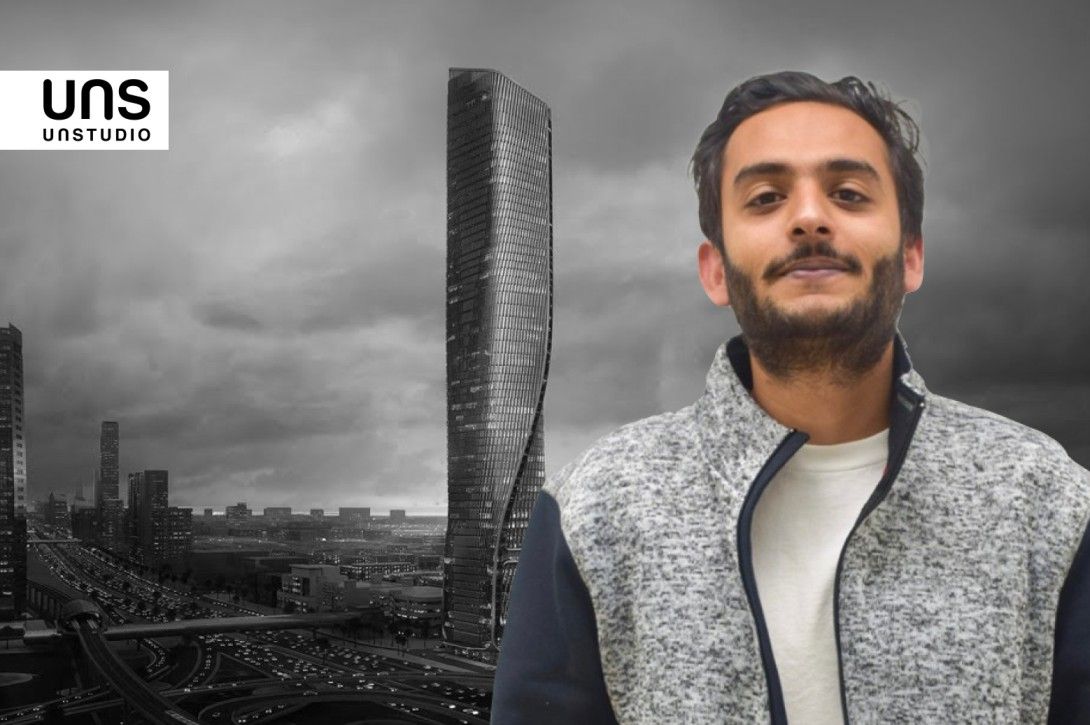
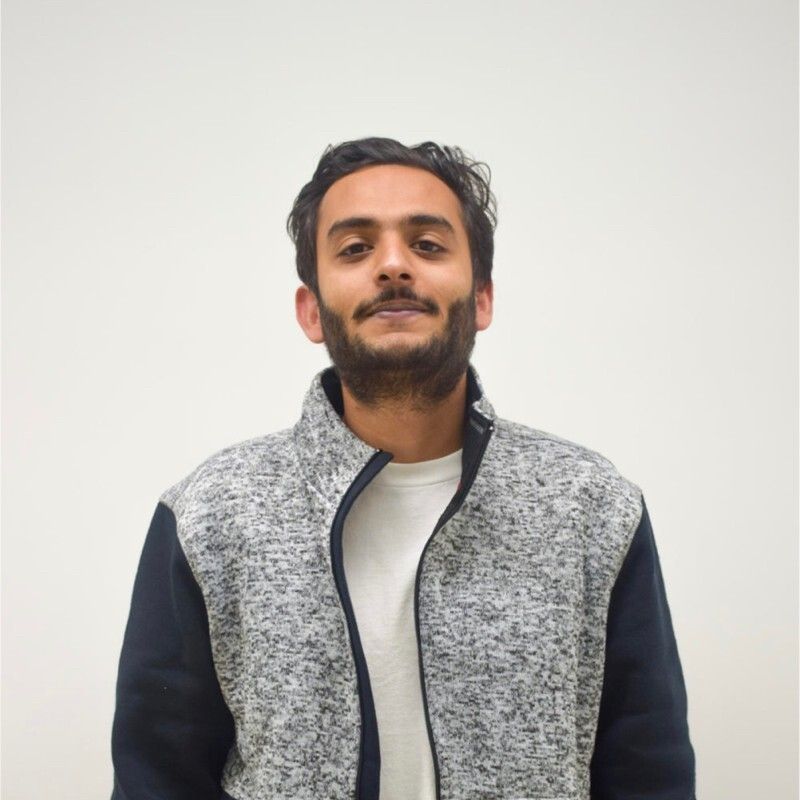
Ami Nigam, Architect and Design Technology Specialist at UNStudio
I believe that a general architect in 2022 needs to know at least a little bit of everything, from building code to detailing to programming and BIM. That's the zeitgeist of today. Our doctors today are working with robots, our lawyers and judges are algorithms, and our accountants are complex spreadsheets. Why shouldn’t we expect the same from our Architects?
Q1. What do BIM and Computational Design mean to you, and how do you manage to dwell in both worlds?
BIM, Building Information Modelling, is about maintaining a big database with information about each element in a building- from walls and windows to building services like pipes, ducts, beams and so on. A typical element of a BIM model will have ‘geometry’ and ‘data’, like information about its level, volume, fire rating, and more.
Computational Design, in my opinion, is how architects operate in today’s times- the age of big data- Web 3.0, 5G etc. I like to think of it as designing while trying to utilise all the power of computing that is available to us now.
These two worlds are fundamentally complementary to each other. Computational design allows us to design with data that BIM technology helps us represent and document. This is the standard operating procedure for most international firms these days: we design using computational design processes and document using BIM.
Q2. Why do you think developing “tools, processes, and workflows” is important?
Processes and workflows are the tools of design in the domain of computational design. In essence, instead of designing a building, we’re setting up workflows that, when given a specific data set, will result in a specific form or program arrangement. Furthermore, leveraging these data points, the same workflow can produce 10 or 100 or 10,000 variations that can be evaluated against specific parameters to find an optimal solution to a given problem.
This requires a shift in thinking. Back in the day, we would draft plans, sections and elevations; today we design systems that produce building elements like walls, windows, roofs etc. 15 years ago when a firm commissioned a building, you’d have different architects coming up with 1 or 2 schemes each. Now we have the power to evaluate 1000 variations within minutes or hours. Additionally, you can document plans, sections, and elevations for the 1000 options if you want using a couple of simple scripts or workflows.
This has radically changed the way we understand and design the built environment. At its core, it’s AEC companies catching up with technology.
Q3. What does a typical day at work look like for you?
A typical workday is not a ‘typical’ day at all. It varies greatly based on the project dynamics. I have days on early-stage projects where I’m coming up with design concepts and solutions, documenting and communicating them with the project team, management, engineers, clients, etc. A lot of my days are spent developing computationally driven facade systems, running optimization algorithms, and trying to make ten different families from tens of thousands of individual facade elements. Other days, I’m developing workflows to bring specific building or facade elements from Rhino to Revit or vice-versa.
There are days when Richard Stewart, who is our BIM manager for Asia, and I are working on BIM strategy and present it to senior management to align the overall direction. I also develop specialist content and train the architects on advanced software like Grasshopper and Dynamo. About 60-70% of my time is spent as an architect, 30-40% doing management, research, training, implementation, etc.
Q4. So you are an architect who is a technology specialist, develops tools and workflows, writes code…where did you pick all that up?
I did my undergraduate studies in architecture at the Arts University Bournemouth and then moved to China. There, I saw the scale of projects and people using tools like Grasshopper.

The Huamei Cafe
I became very interested in this while working on Huamei Cafe, a project where I was assisting an Architect who had just moved back to Beijing after his Master’s at Yale. We not only designed, but produced all the documentation and built the cafe from a single script. This was revolutionary for me at the time.
Following this, I was starting to get a little bit more comfortable with Grasshopper. Along with a couple of friends, I started a small design collective called Defacto, where we experimented with Computational Design and 3d printing in the context of product design, fashion design and other unique experiences like 3d printing food. This was again a big leap, taking the skills that I picked up in architecture and putting them in other design and fabrication contexts. I was obsessed.

Fashion design by Defacto
I started looking for a Master’s program that would allow me to learn more about this. This is when I came upon IAAC. After looking at the program and speaking to a few students, I was convinced this is where I wanted to go.
In my first year, I clearly remember this moment when we had the first programming class in processing with Angelos Chronis, who is now the head of the City Intelligence Lab in Austria. When the 2-hour session ended, I found myself being obsessed again. Programming allowed me to think beyond just Grasshopper or Dynamo or Rhino or Revit. It empowered me to think about the fundamentals of what we do and what can be programmed.
I got into advanced Grasshopper because of Aldo Solazzo, my Computational Design tutor at IAAC and soon I was doing things beyond my wildest imagination, scripting things like genetic algorithms, agent-based design, using physics engines like Kangaroo. My obsession with toolkits like Grasshopper / Dynamo / Python still defines a core part of my vocation and interests.
Q5. How did you know that you wanted to study Computational Design, Digital Fabrication and Programming for your Master’s?
I think it is key to know what you want out of a Master’s Program. I’ve had students reach out to me who want to get into Master’s programs without really knowing what the program is and if it aligns with their vision for their careers. I think you can go to the best schools in the world but if you don't know what you want out of it, it's not going to benefit you. I knew I wanted to continue developing my skills in computational design and digital fabrication during my time in Beijing and programming became something that I fell in love with at IAAC. So I took all the classes where I was developing these skills. I also knew that these skills were very employable because of lectures we had at IAAC by Ben Van Berkel and Bjarke Ingels. They spoke about how their firms operate, how they approach design problems etc.
But I think the interests come first. You need to know what you want. Even if it means spending two or three years in the industry before doing your Master’s. I know students who enrolled for post-graduation just for the sake of it, and I don’t think they got that much out of it. Spend some time in the industry, and figure out what you like. When you have an interest, you will know who are the people who are good at these things.
Q6. What was studying at the Institute of Advanced Architecture like? Does it contribute to what you do now?
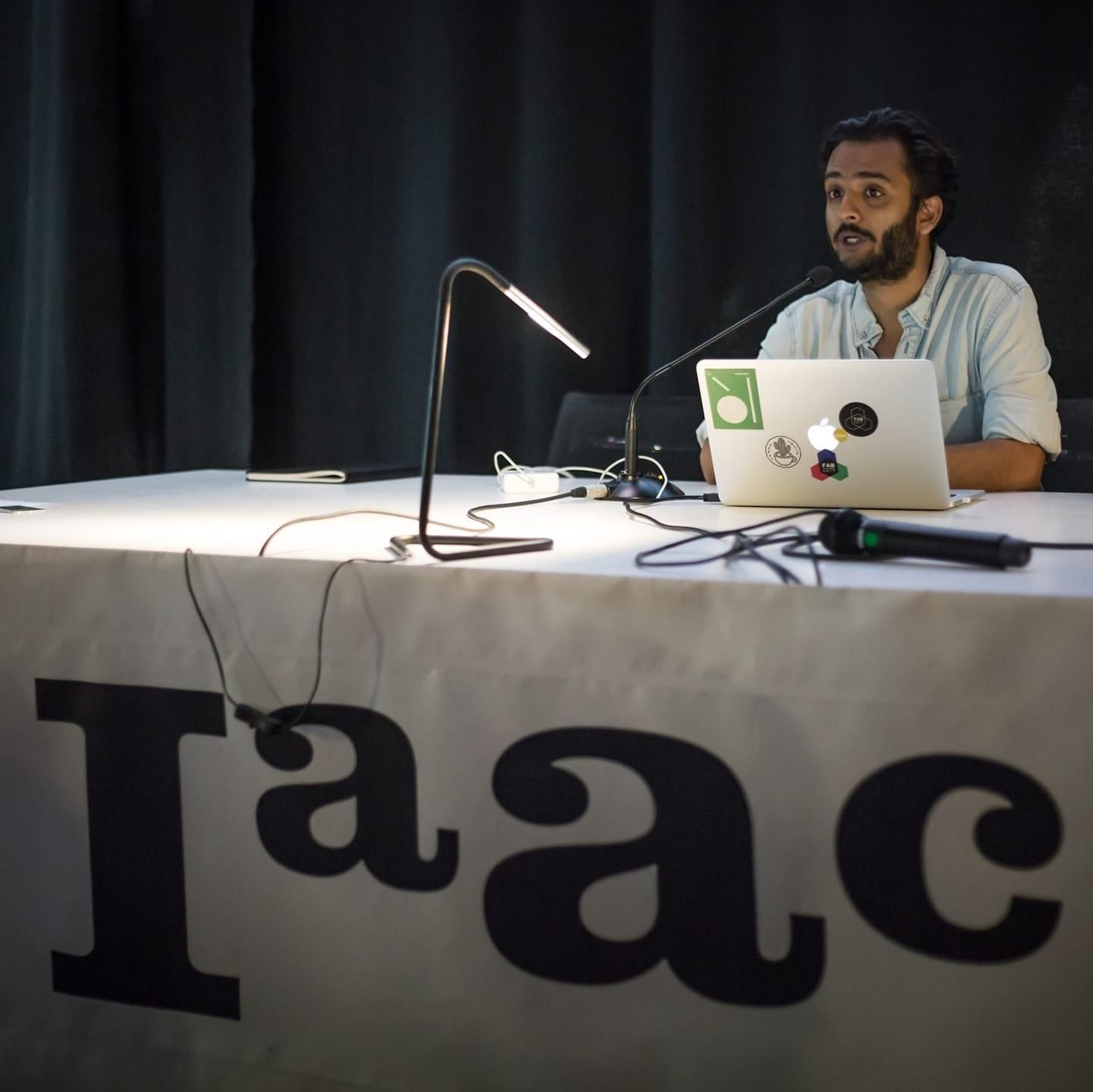
Ami Nigam presenting his Thesis at the IAAC
IAAC was a fantastic experience. The city of Barcelona is truly breathtaking and inspiring. With [Antoni] Gaudi and some of his work…you can always connect Computation Design to what he was doing.
It was fantastic being alongside people with similar interests and skills in an environment where those skills are fostered and developed. The tutors treated you as peers in learning and were all collectively trying to push boundaries with a unified vision. More than anything else, it was about the network. Some of my best friends from this experience are in really cool places doing really cool work, whether it is firms like ZHA or more bespoke experiential & technology companies like External Reference Architects or Noumena or teaching in places like Hong Kong University. Even though it's hard with everyone’s schedules, we try to keep our network strong and still discuss things in the industry.
Q7. Do you think that what you do is very different from what Architects are generally trained for?
I don't think this is unusual for design firms like UNS, ZHA, BIG, Heatherwick or even more commercial firms like SOM, KPF, or Gensler to employ ‘Architects’ who write code either in textual formats like Python, or a visual format like Grasshopper or Dynamo.
A general architect in 2022 needs to know a little bit of everything, from building code to detailing to programming and BIM. That's the zeitgeist of today. Our doctors today are working with robots, our lawyers and judges are algorithms, and our accountants are complex spreadsheets. Why shouldn’t we expect the same from our Architects?
We are surrounded by data and technology. If we shy away from them, we might become obsolete. Things like programming, scripting, Grasshopper, and Dynamo bring a lot of value to architecture, but they are also bringing back the renaissance of our industry. Back in the day, architects were master builders- we knew how materials worked, we knew building sciences, physics and engineering. But now, we are such a small part of what is going on that we might become irrelevant soon. I think this is where technology helps us. It allows us to do things more efficiently, and to go beyond what our training is. In the age of technologies like the Metaverse, this is very relevant.
Q8. How important do you think it is for people in the AEC industry to understand BIM?
I think young professionals must be comfortable with BIM & Computational Design. This is the way forward if you still want to be relevant. Data is the world that surrounds us, by ignoring that, you will find yourself very quickly being obsolete. Think about when the first CAD software came out, a lot of architects and engineers still drafted everything by hand. Fast forward 5 years, everyone was working with CAD. I think we’re in a similar situation right now with BIM.
Q9. What is the scope of BIM in the future, especially in developing countries?
I think we have to separately think about scope and maturity. In my opinion, it's like asking what’s the scope of mobile phones in developing countries. Obviously, the scope is huge. The application of BIM includes tracking every individual element of a building before it is built. This brings us to market maturity. Right now, we just don't have enough trained personnel in developing countries that can make sense of all this data. But with companies like Novatr and their mission to upskill people, we’re soon going to have a generation of young people who are comfortable managing all this data and information.
Recently in an interview with The Wire, Raghuram Rajan, one of India’s foremost economists, lays out his argument for a radical rethinking of India’s political and economic systems. He talks about the fact that we need to concentrate on services rather than manufacturing as a driver for growth. Right now, some of the biggest BIM service companies are based out of India and like architects and engineers, they need BIM proficient people to provide services to companies around the world. This is a fast-growing industry that has jobs that need filling.
Q10. How does one begin to learn about BIM?
I think we live in an age where knowledge is truly democratic. Platforms like Youtube, Lynda.com, and LinkedIn Learning have thousands of hours of content. While one may think that Youtube is the new University, I still place value on structured learning. Platforms like Novatr provide learners with access to mentors who will help them with their learning journey and style. When you want to start learning something like BIM modelling software, doing it regularly over some time is the way to make the information stick. Once you understand the fundamentals, you can use Youtube or something to develop further but I’d start with something like the Novatr BIM Professional Course.

Q11. You are a mentor at Novatr’s BIM Professional Course. What drives you to do it, and how has the experience been?
It is a fantastic opportunity. I got really interested in Novatr through their posts about the BIM Course. I thought the marketing content that Novatr was producing was very engaging and the course was very relevant, seeing the gap in Architectural Education and Architectural Practice. When I started developing the course with Anam, I was given complete creative control on developing and delivering the content. Furthermore, I was given a fantastic support team of learned experience designers, and graphic and motion graphic designers. I could curate the content and the team was able to execute the vision I had for the Dynamo module.
When we started delivering the content, I was amazed by how engaged the students were. One of my proudest moments was when learners were debugging each other's scripts. I have to give kudos to the learners for being interested even though the content was quite dense and some of it quite complex. I think that we have a fantastic group of BIM & Computational Designers in the making.
Q12. Some advice for young professionals who aspire to work with firms like UNStudio?
My advice for young professionals looking to work at firms like UNS will be to find their interests and become experts. Even a generalist at UNS will be a specialist of some sort. It doesn’t have to be technology or software, you could be an expert in concepts or diagramming or modelling but have something that the hiring manager will look at and say we need this at this firm.
My way into UNS was through BIM. I was contacted when they were hiring for a specific BIM project while I was working for a BIM Consultancy. Over the last 2 years, my role has grown beyond just BIM into a more holistic Design Technology Specialist who understands UNS style complex geometry, knows the computational design processes at UNS and knows BIM. This isn't unusual these days. Firms hire for specific expertise and once you’re at a firm, your role defines itself based on your skillset.
Moral of the story: Keep learning and growing! Become an expert and look for your way into the firm that you want to work at through your skills.
Take the first step with Novatr’s BIM Professional Course. And for more resources on BIM, parametric design, software & tools, industry trends, and career, head to the Resources.
Join 100,000 designers who read us every month
